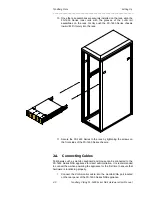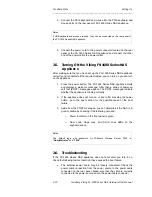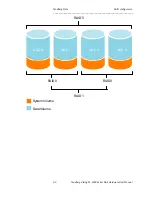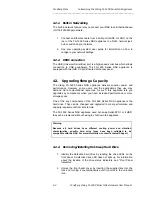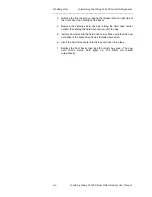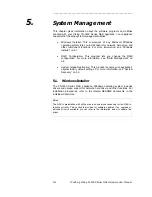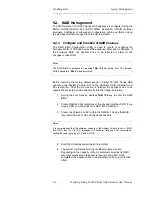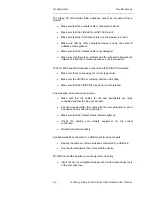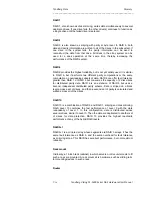
Tandberg Data
System Management
_____________________________________________________________
5-3
Tandberg Viking FS-1600 Series NAS Hardware User Manual
5.2. RAID Management
The RAID volume of FS-1600 Series NAS appliance is configured using the
BIOS of ARECA ARC-1160 or ARC-1261ML Serial-ATA II RAID controller
hardware. Additional or subsequent configuration can be performed using
the web-based RAID manager once the OS is installed.
5.2.1. Configure and Creation of RAID Volumes
The RAID BIOS Configuration Utility is used to create or configure the
hardware RAID of FS-1600 Series NAS appliance. After any modification of
the hardware RAID, the appliance has to be rebooted in order for the
changes to take effect.
Notes
The RAID BIOS is accessed by pressing
TAB / F6
key during boot. The default
BIOS password is
“0000”
when prompted.
Before restoring the factory default image to Viking FS-1600 Series NAS
appliance, the System Volume (SV) on the hardware RAID controller must
be created first. After the SV creation is finished, the appliance has to be
rebooted to make the volume effective before the image restoration.
1.
During the boot process, depress
TAB / F6
key to enter the RAID
BIOS.
2.
Create RAID set that comprises of the physical member HDD. If you
have 4 HDD, you can select all 4 HDD into a RAID set.
3.
Create the Volume set (SV) within the RAID set. Decide the RAID
level and strip size of SV and the desire capacity.
Notes
It is recommended that the minimum capacity of the System Volume is set to 10GB
and RAID level 0+1 for OS redundancy. Tandberg Data does not recommend
setting the capacity value of SV below 10GB.
4.
Enter the default password word if prompted.
5.
The system will start performing the RAID volume creation.
Depending on the capacity of the SV selected as well as its RAID
level, this process may take several hours to complete. Once
completed, the appliance has to be rebooted for the volume to take
effect.

